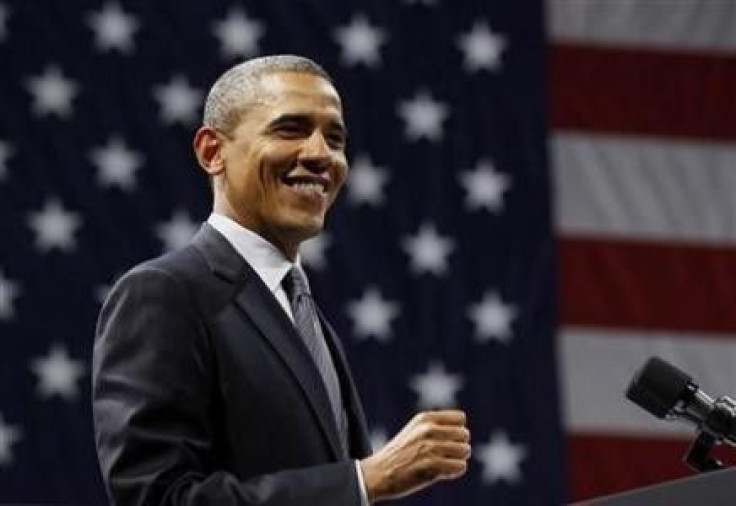Newest Obama Order Doesn't Set 'Peacetime Martial Law'

Last Friday, President Barack Obama quietly amended a longtime U.S. law authorizing the federal government to take control of key industries -- transportation, domestic energy, food and water supplies -- in times of war or other national emergencies.
By Saturday, the news had prompted bloggers and Twitter users to explode in outrage, all but accusing the president of declaring martial law.
The White House issued Obama's executive order on national defense resources preparedness, billed as an update to the Defense Production Act of 1950. The new order doesn't give the president more powers; in fact, almost every commander in chief since Harry Truman has signed similar orders, including Bill Clinton and George W. Bush
But that hasn't stopped the blogosphere and Twitterati from declaring the order yet another Obama power grab to give the executive branch total authority over the U.S. economy.
President Obama now has complete control over all resources in the United States!! Peacetime Martial Law!! one Twitter user wrote. Another tweeted, Obama Executive Order Paves the Way for Nationalization of Economy, a headline echoed by Fox News, the Drudge Report and Business Insider.
What those critics don't realize is that, under their definition, the economy has already been nationalized for generations.
1939 Order Spurs National-Defense Mandates
Although Obama's directive is tied to the 1950 law (enacted as part of a civil defense and war mobilization effort at the start of U.S. military involvement in Korea), the first legislation of its kind dates back to Executive Order 8248, which in 1939, as World War II loomed, set responsibilities of the president and his administration in the event of a national crisis.
Gabe Rottman, legislative counsel and policy adviser to the American Civil Liberties Union, said Obama's executive order was altered to reflect the creation in 2002 of the Department of Homeland Security.
This isn't about significantly changing current law, Rottman said. This about advising and directing the private sector -- and federal agencies -- to stockpile essential resources in case of national emergency.
When Clinton issued his order to prepare the United States for some unspecified military emergency, most disaster-response tasks were assigned to the Federal Emergency Management Agency. Today, those functions belong to the Department of Homeland Security, of which FEMA is now a part. Most of the significant changes in Obama's order involve reassigning FEMA's old responsibilities to the DHS.
Those changes are clear when running Clinton's 1994 order and the Obama directive through Microsoft Word's compare feature, which combines documents into a single version and highlights the differences between them. Both documents note that the order is applicable to ensure a prepared national defense in peacetime and in times of national emergency -- a fact that should assuage fears that Obama is attempting to declare peacetime martial law.
Cabinet's Emergency Duties Outlined
Section 103 of the Obama order reveals the most about the intent of the underlying law. The section details responsibilities of executive departments and agencies in case of a national emergency, which includes specifically evaluating the availability of the most critical resources and production sources improving the efficiency and responsiveness of the domestic industrial base to support national defense requirements and fostering cooperation between the defense and commercial sectors for research and development and for the acquisition of materials, services, components and equipment to enhance industrial base efficiency and responsiveness.
Such language hardly signals an authoritarian overhaul of private-property rules by a commandeered executive branch.
Section 201, taken out of context, could potentially lead someone to assume the order allows for executive control of all U.S. resources. However, it actually delegates power to the secretaries of agriculture; energy; health and human services; transportation; defense; and commerce to allocate materials, services and facilities as deemed necessary or appropriate to promote the national defense. In other words, those Cabinet officials must prioritize government contracts involving certain resources -- items named include energy sources, medicines and food resources -- that may be necessary to promote the national defense.
Also different about Obama's executive order is that, for the first time in the history of national resource preparedness orders that have been signed since 1950, tobacco isn't listed as a necessary resource that should be stockpiled in a military emergency. It also for the first time mandates the Department of Agriculture to monitor livestock resources, veterinary resources [and] plant health resources and expands the definition of food resources to include potable water packaged in commercially marketable containers.
This isn't to say some parts of the 62-year-old law shouldn't be of concern. But implying that Obama signed off on the latest change as a means of expanding power by fiat belies the facts.
But other interesting questions arise. For instance, the timing: Why did Obama sign off on the order now, and why on a Friday afternoon? Also, if the three branches of the government are designed to check each other, how is it that the president has the power, through executive orders, to create legislation when that power is constitutionally delegated to Congress?
Either way, nothing about the scope of Obama's presidential authority has changed with the new order -- and the country is far from being under martial law.
© Copyright IBTimes 2024. All rights reserved.











